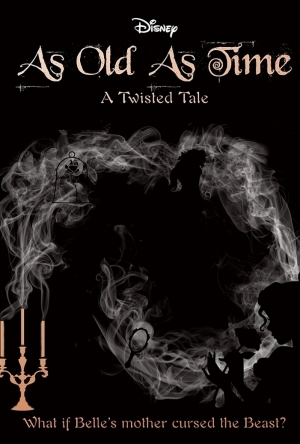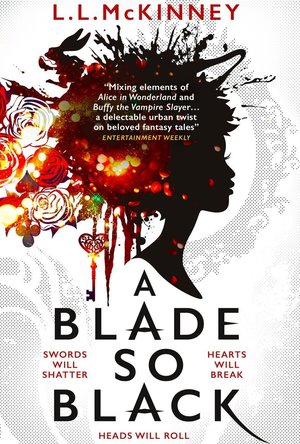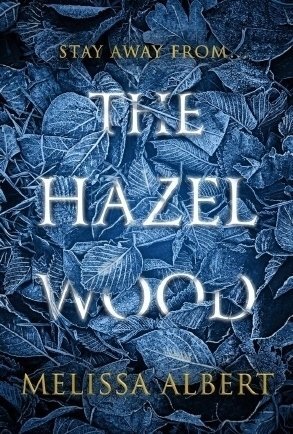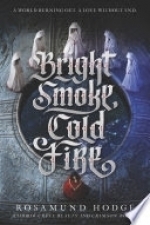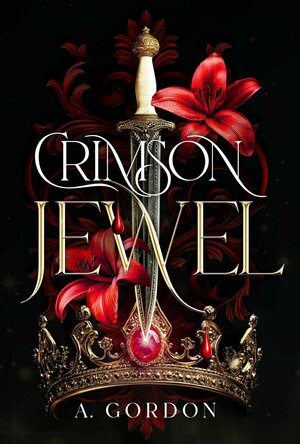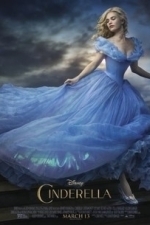Search
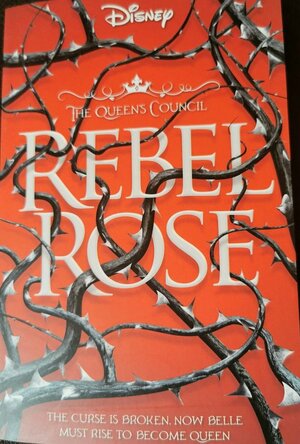
Rebel Rose (The Queen's Council #1)
Book
Happily ever after is only the beginning as Belle takes on the responsibility of becoming queen and...
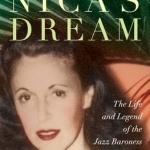
Nica's Dream: The Life and Legend of the Jazz Baroness
Book
It's a misty night in 1950s New York. A silver Rolls-Royce screeches to a stop at the neon-lit...
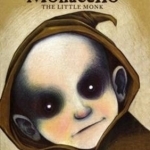
Monacello: The Little Monk: Book 1
Geraldine McCaughrean and Jana Diemberger
Book
A haunting legend from the Undercity of Naples "Goblin" "Gremlin!" "Demon!" Strange little creature....
Lottie disney bookworm (1056 KP) rated As Old As Time in Books
Aug 16, 2019
Review by Disney Bookworm
I’m going to come right out and say (although you will probably be able to tell if you make it to the end of this blog) that this is, so far, my favourite book in the twisted tale series. Seriously, this is the second time I have read it and I loved it just as much as the first time. I got just as engrossed in the story and I seriously think Liz Braswell and I could be best friends!
As Old As Time is the retelling of Beauty and the Beast and opens with the familiar story of the enchantress and the young, vain prince that we all know. You can probably still picture the stained-glass scene from the original 1991 movie and the dramatic ballroom scene in the 2017 remake.
Refusing to be eclipsed by these though, Braswell follows the well-known tale with: “It was a very good story. It often entertained the woman who lay in her black hole of a room, manacled to a hard, cold bed.”
Wait! What?
There, with one fell swoop, on the second page, Braswell brings an almost gothic darkness to the fairy tale. Of course, some would say it is already dark: very few people who are cursed to become a beast are particularly jolly about the situation! However, Braswell goes one step further by both revealing the story behind the enchantress and taking us on a journey to discover the ugly truth in the present.
Liz Braswell creates a kingdom where magic and non-magic people have lived together peacefully for years but where politics and a lack of cultural understanding is threatening to tear that apart as les charmantes find themselves persecuted by les naturels. (I can’t imagine where she draws her inspiration from(!))
It is in this kingdom that we meet a young dreamer called Maurice and the enchantress Rosalind, Belle’s mother (nicknamed Rose- so clever!). Maurice is very much a younger version of the character we grew up with: loveable and devoted to his inventions. Rosalind however is much more headstrong and impulsive: even changing her appearance on a whim. Her pride is fierce and we first meet her holding her own against a large man insulting ‘her kind’, calling her unnatural and a child of the devil. The bully soon learns the error of his ways when his nose is replaced by a pig’s snout but a warning runs all the way through this tale: “magic always comes back on itself”.
Maurice and Rosalind’s life is happy and settled at first but they soon start to witness the persecution of les charmantes for themselves. Thus, when the King and Queen call on Rosalind to protect them against the advancing plague, she passionately fights for her people…only to be rejected and turned away. Maurice, always the voice of reason, convinces Rosalind to at least protect the children and servants and so it comes to pass that Rosalind later visits the young prince, on the eve of his coronation, carrying with her the simple gift of a rose.
Braswell’s character development is, as always, impressive. Belle is immediately relatable as the kooky bookworm we know and love: her story running parallel to the film until we, as readers, develop a relationship with her parents. It is then that we discover there is a slight edge to Belle. Although clearly tortured by the fact her mother cursed a 10-year-old boy, Braswell’s Belle is desperate to be adventurous and heroic like the characters in her books but soon realises an adventure is not all it is cracked up to be. Like her mother, Belle can be quite impulsive: grabbing the enchanted rose before the beast can stop her and destroying any chance of breaking the spell. However, she is also quick and cunning, tricking the wardrobe into revealing the curse’s timeline. Nevertheless, the bravery of our protagonist can never be doubted and Belle embarks on one hell of a journey to discover the truth about her family and herself.
Uniquely, within As Old As Time we slowly see side-line characters weave their way into the lives and stories of our characters. Levi and Alaric, for example, are old friends of Maurice and Rosalind and are seemingly insignificant to the story at first. However, Levi is also the godfather to Belle and the village bookseller (“If you like it that much, it’s yours!” – that guy). Alaric on the other hand has a significant link to the castle and both carry clues with them that assist Belle on her quest.
Any Beauty and the Beast tale would not be complete without LeFou and Gaston – that infamous double act- but even Gaston is ever so slightly darker than his animated counterpart. Frederic: another friend from the past and, quite frankly, odd from the start also plays a pivotal role in the story but I won’t spoil the surprise for you!
As Old As Time is true to its name: weaving two stories into its plot at different points in time: the story that we all know and the story of how that came to be. It is an ominous tale with curses, murder, creepy ivy statues and a frankly terrifying tour of the lunatic asylum.
It is not all doom and gloom however; Liz Braswell takes a very tongue-in-cheek attitude towards the infamous scenes within Beauty and the Beast: invoking a dry sense of humour into the story. From a chapter named “Be Our … Oh You Know the Rest” to a direct reference to Stockholm Syndrome: Braswell makes sure that we do not expect her novel to be a copycat, heartfelt tale with a happy ending. Belle even remarks to the Beast that hoping she would fall in love with him within a month or so was wildly unrealistic.
This is very much a novel for the cynical Disney lovers amongst us and highly deserving of its title of a twisted tale!
As Old As Time is the retelling of Beauty and the Beast and opens with the familiar story of the enchantress and the young, vain prince that we all know. You can probably still picture the stained-glass scene from the original 1991 movie and the dramatic ballroom scene in the 2017 remake.
Refusing to be eclipsed by these though, Braswell follows the well-known tale with: “It was a very good story. It often entertained the woman who lay in her black hole of a room, manacled to a hard, cold bed.”
Wait! What?
There, with one fell swoop, on the second page, Braswell brings an almost gothic darkness to the fairy tale. Of course, some would say it is already dark: very few people who are cursed to become a beast are particularly jolly about the situation! However, Braswell goes one step further by both revealing the story behind the enchantress and taking us on a journey to discover the ugly truth in the present.
Liz Braswell creates a kingdom where magic and non-magic people have lived together peacefully for years but where politics and a lack of cultural understanding is threatening to tear that apart as les charmantes find themselves persecuted by les naturels. (I can’t imagine where she draws her inspiration from(!))
It is in this kingdom that we meet a young dreamer called Maurice and the enchantress Rosalind, Belle’s mother (nicknamed Rose- so clever!). Maurice is very much a younger version of the character we grew up with: loveable and devoted to his inventions. Rosalind however is much more headstrong and impulsive: even changing her appearance on a whim. Her pride is fierce and we first meet her holding her own against a large man insulting ‘her kind’, calling her unnatural and a child of the devil. The bully soon learns the error of his ways when his nose is replaced by a pig’s snout but a warning runs all the way through this tale: “magic always comes back on itself”.
Maurice and Rosalind’s life is happy and settled at first but they soon start to witness the persecution of les charmantes for themselves. Thus, when the King and Queen call on Rosalind to protect them against the advancing plague, she passionately fights for her people…only to be rejected and turned away. Maurice, always the voice of reason, convinces Rosalind to at least protect the children and servants and so it comes to pass that Rosalind later visits the young prince, on the eve of his coronation, carrying with her the simple gift of a rose.
Braswell’s character development is, as always, impressive. Belle is immediately relatable as the kooky bookworm we know and love: her story running parallel to the film until we, as readers, develop a relationship with her parents. It is then that we discover there is a slight edge to Belle. Although clearly tortured by the fact her mother cursed a 10-year-old boy, Braswell’s Belle is desperate to be adventurous and heroic like the characters in her books but soon realises an adventure is not all it is cracked up to be. Like her mother, Belle can be quite impulsive: grabbing the enchanted rose before the beast can stop her and destroying any chance of breaking the spell. However, she is also quick and cunning, tricking the wardrobe into revealing the curse’s timeline. Nevertheless, the bravery of our protagonist can never be doubted and Belle embarks on one hell of a journey to discover the truth about her family and herself.
Uniquely, within As Old As Time we slowly see side-line characters weave their way into the lives and stories of our characters. Levi and Alaric, for example, are old friends of Maurice and Rosalind and are seemingly insignificant to the story at first. However, Levi is also the godfather to Belle and the village bookseller (“If you like it that much, it’s yours!” – that guy). Alaric on the other hand has a significant link to the castle and both carry clues with them that assist Belle on her quest.
Any Beauty and the Beast tale would not be complete without LeFou and Gaston – that infamous double act- but even Gaston is ever so slightly darker than his animated counterpart. Frederic: another friend from the past and, quite frankly, odd from the start also plays a pivotal role in the story but I won’t spoil the surprise for you!
As Old As Time is true to its name: weaving two stories into its plot at different points in time: the story that we all know and the story of how that came to be. It is an ominous tale with curses, murder, creepy ivy statues and a frankly terrifying tour of the lunatic asylum.
It is not all doom and gloom however; Liz Braswell takes a very tongue-in-cheek attitude towards the infamous scenes within Beauty and the Beast: invoking a dry sense of humour into the story. From a chapter named “Be Our … Oh You Know the Rest” to a direct reference to Stockholm Syndrome: Braswell makes sure that we do not expect her novel to be a copycat, heartfelt tale with a happy ending. Belle even remarks to the Beast that hoping she would fall in love with him within a month or so was wildly unrealistic.
This is very much a novel for the cynical Disney lovers amongst us and highly deserving of its title of a twisted tale!
Goddess in the Stacks (553 KP) rated A Blade So Black in Books
Mar 21, 2019
I've seen the point brought up that so many fantasy protagonists have really neglectful parents. Who lets their kid be gone for an unknown amount of time doing something "important" that their kid refuses to tell them about because it's a "secret"? This book makes a point of how NOT neglectful Alice's mother is. The blurb calls her overprotective, but really it's just normal protective. Alice's mom just wants to know her daughter hasn't been shot by the police when she's gone for 24 hours and not answering her phone, that seems normal to me! I actually enjoyed how that was different than a lot of fantasy YA, even if it's really a small sideplot.
In the main plot, Alice is a Dreamwalker, wielding Figment Blades and her own Muchness to kill the Nightmares that try to cross from Wonderland to our world. Her mentor is Addison Hatta, an exile from Wonderland who's been charged to guard his Gateway and train new Dreamwalkers. Along the way we meet two more Dreamwalkers, more exiled Wonderlanders, and learn a bit about the war in Wonderland and why they're exiled but still charged with such an important mission as guiding the Gateways between our world and theirs.
About the only thing I didn't like about this book was how it left so many questions unanswered at the end. We got a cliffhanger to lead us into the sequel, A Dream So Dark, but it isn't due out until September! I'm also wondering where the Cheshire Cat is - he's too instrumental a character to leave out, I would think - but I have a few possible ideas about where the author is going with that, so I'm anxious for the sequel, to see if I'm right.
A Blade So Black is a very unique take on Wonderland by a POC author, starring a POC heroine. There's also an adorable lesbian couple as side characters. With minority racial representation, a fairy tale base, and a splash of LGBT+ rep, this book checked a lot of the boxes I look for in my fantasy. It wasn't the best YA fantasy that I've read in the last year, but it was definitely fun!
You can read all my reviews at http://goddessinthestacks.com
In the main plot, Alice is a Dreamwalker, wielding Figment Blades and her own Muchness to kill the Nightmares that try to cross from Wonderland to our world. Her mentor is Addison Hatta, an exile from Wonderland who's been charged to guard his Gateway and train new Dreamwalkers. Along the way we meet two more Dreamwalkers, more exiled Wonderlanders, and learn a bit about the war in Wonderland and why they're exiled but still charged with such an important mission as guiding the Gateways between our world and theirs.
About the only thing I didn't like about this book was how it left so many questions unanswered at the end. We got a cliffhanger to lead us into the sequel, A Dream So Dark, but it isn't due out until September! I'm also wondering where the Cheshire Cat is - he's too instrumental a character to leave out, I would think - but I have a few possible ideas about where the author is going with that, so I'm anxious for the sequel, to see if I'm right.
A Blade So Black is a very unique take on Wonderland by a POC author, starring a POC heroine. There's also an adorable lesbian couple as side characters. With minority racial representation, a fairy tale base, and a splash of LGBT+ rep, this book checked a lot of the boxes I look for in my fantasy. It wasn't the best YA fantasy that I've read in the last year, but it was definitely fun!
You can read all my reviews at http://goddessinthestacks.com
Cassie Osbourne (6 KP) rated The Hazel Wood in Books
Nov 9, 2018
Alice and her mother, Ella, have been on the road for as long as she can remember, constantly followed by some kind of freak bad luck. When word reaches them that Ella’s mother, famous fairytale author Althea Proserpine, has died, they think they’re safe...until Ella gets kidnapped by the Hinterlands. To save her, Alice must venture into the Hazel Wood.
I LOVE fairy tales, the darker, the better as far as I’m concerned. So when I’m told about a book that is based around dark, original fairytales, naturally I wanted to read it as soon as I could get my hands on it. However, it wasn’t quite what I expected.
Although this is a book about fairy tales and their characters being real, we are only told two stories: ‘Alice Three Times’ and ‘The Door That Wasn’t There’. This means that when we meet the Nightwalkers, Twice-Killed-Katherine, the Briar King and Hansa the Traveller, we don’t know what to make of them because we don’t know their stories. Now, I am all for discovering more about characters and their motivations as the story unfolds, but we never get that with these characters - it’s almost just assumed that we know who they are. I even checked online to see if I was reading the second book in the series by mistake! There is a book being written called ‘Tales From The Hinterland’ which is the collection of stories that these characters are from, but it is set to be published in 2020 when really it should have come first. Having said all of that, I did really like the ‘real world’ characters, and I thought that Janet and Spinner were super cool.
The atmosphere was really good throughout, even in the middle section when I found it hard to read because I couldn’t connect were really atmospheric. I loved the strange surrealness and dreamlike writing that was very fairy tale-ish, and it was brilliant. I also really enjoyed the writing style. I don’t think that I’ve properly ever read a book with so many current references and I quite like it. It makes the book feel very contemporary (after all it was only published in January) and in our world, while still having the other world, the Hinterland, mixed in which gives it a slight feeling of invasion and overlap. It also really suits Alice’s character and voice since she is narrating the story and was brought up very much in our world.
The plot was good on the whole. My main issue, once again, comes down to the fact that the stories weren’t told - or rather that the wrong one was. ‘Alice Three Times’ was great because it became relevant but ‘The Door That Wasn’t There’ seemed not to have any purpose. Surely if there was one story that Finch would have told Alice, it would have been ‘Twice-Killed-Katherine’ as she is following them for most of the first half of the book (and then just disappears for no real reason).
While the beginning and end of the book are really great and really gripping, I found most of the middle section really difficult to read because, guess what, we didn’t know the stories! When I started reading this book, I thought that I would finish it in the same week I started it...that was two weeks ago. The middle of the book is when Alice actually enters the Hinterland, but since we don’t know anything about the characters or the world, it feels like we’re constantly playing catch up. Whenever I decided what I was going to sit down, grit my teeth and get through it, it felt like it was a chore and I could only manage one or two chapters at a time. It gets very gripping again from chapter twenty-eight when Alice starts to get sucked into the story, but that’s because we’ve already been told ‘Alice Three Times”.
Although I did like ‘The Hazel Wood’, a middle did take a lot of the enjoyment out of reading it. Maybe when ‘Tales From The Hinterland’ comes out, I’ll read that then give this book another shot when I am more informed.
Characters: 6/10
Atmosphere: 8/10
Writing Style: 8/10
Plot: 7/10
Intrigue: 6/10
Logic: 7/10
Enjoyment: 7/10
I LOVE fairy tales, the darker, the better as far as I’m concerned. So when I’m told about a book that is based around dark, original fairytales, naturally I wanted to read it as soon as I could get my hands on it. However, it wasn’t quite what I expected.
Although this is a book about fairy tales and their characters being real, we are only told two stories: ‘Alice Three Times’ and ‘The Door That Wasn’t There’. This means that when we meet the Nightwalkers, Twice-Killed-Katherine, the Briar King and Hansa the Traveller, we don’t know what to make of them because we don’t know their stories. Now, I am all for discovering more about characters and their motivations as the story unfolds, but we never get that with these characters - it’s almost just assumed that we know who they are. I even checked online to see if I was reading the second book in the series by mistake! There is a book being written called ‘Tales From The Hinterland’ which is the collection of stories that these characters are from, but it is set to be published in 2020 when really it should have come first. Having said all of that, I did really like the ‘real world’ characters, and I thought that Janet and Spinner were super cool.
The atmosphere was really good throughout, even in the middle section when I found it hard to read because I couldn’t connect were really atmospheric. I loved the strange surrealness and dreamlike writing that was very fairy tale-ish, and it was brilliant. I also really enjoyed the writing style. I don’t think that I’ve properly ever read a book with so many current references and I quite like it. It makes the book feel very contemporary (after all it was only published in January) and in our world, while still having the other world, the Hinterland, mixed in which gives it a slight feeling of invasion and overlap. It also really suits Alice’s character and voice since she is narrating the story and was brought up very much in our world.
The plot was good on the whole. My main issue, once again, comes down to the fact that the stories weren’t told - or rather that the wrong one was. ‘Alice Three Times’ was great because it became relevant but ‘The Door That Wasn’t There’ seemed not to have any purpose. Surely if there was one story that Finch would have told Alice, it would have been ‘Twice-Killed-Katherine’ as she is following them for most of the first half of the book (and then just disappears for no real reason).
While the beginning and end of the book are really great and really gripping, I found most of the middle section really difficult to read because, guess what, we didn’t know the stories! When I started reading this book, I thought that I would finish it in the same week I started it...that was two weeks ago. The middle of the book is when Alice actually enters the Hinterland, but since we don’t know anything about the characters or the world, it feels like we’re constantly playing catch up. Whenever I decided what I was going to sit down, grit my teeth and get through it, it felt like it was a chore and I could only manage one or two chapters at a time. It gets very gripping again from chapter twenty-eight when Alice starts to get sucked into the story, but that’s because we’ve already been told ‘Alice Three Times”.
Although I did like ‘The Hazel Wood’, a middle did take a lot of the enjoyment out of reading it. Maybe when ‘Tales From The Hinterland’ comes out, I’ll read that then give this book another shot when I am more informed.
Characters: 6/10
Atmosphere: 8/10
Writing Style: 8/10
Plot: 7/10
Intrigue: 6/10
Logic: 7/10
Enjoyment: 7/10
Goddess in the Stacks (553 KP) rated Bright Smoke, Cold Fire in Books
Apr 15, 2018
Fantastic Shakespeare retelling (3 more)
Excellent characters
Interesting worldbuilding
Romeo & Juliet + Zombies!
I read the description of this book somewhere and immediately requested it from the library - a re-imagining of Romeo and Juliet in a dying world with necromancers? SIGN ME UP. And it did not disappoint!
Hodge has written a few other books - Cruel Beauty, a retelling of Beauty and the Beast, and Crimson Bound, a retelling of Little Red Riding Hood. (She also has a novella that spins Cinderella.) You all know how much I like my redone Fairy Tales! Bright Smoke, Cold Fire, is a little different in that it's a Shakespeare play, instead of a fairy tale. I recently read and reviewed Miranda and Caliban, another Shakespeare reskin, but this, I think, is much better.
The Capulets have become the Catresou, and the Montagues the Mahyanai in this dark fantasy. The Ruining has killed every human outside the city of Viyara/Verona - only stopped by the mystical walls put up by a long-dead priestess and maintained by a mysterious cult of nuns.
My favorite characters in this book - and arguably the main characters - are Runajo (Rosaline) and Paris, rather than Romeo and the Juliet. (It's a title, not a name - her name was stripped from her as an infant when the magic was worked to make her "the Juliet.") The original play doesn't give either of them much time, and they are both fascinating characters in this novel - Runajo a little more than Paris, in my opinion. Runajo is a member of the Sisters of Thorns - the cult of nuns keeping the walls of Viyara up against The Ruining. When she accidentally brings the Juliet back from death, she becomes - or at least thinks she becomes - that which she and the city fear the most. A necromancer. Runajo and the Juliet both believe they will (and should) die for this crime, but still use the time they have left to try and save the city from the necromancers operating within.
Meanwhile, Paris and Romeo have found themselves bound by the magic that should have bound Romeo and Juliet, had it not gone terribly wrong. They can feel each other's emotions, see each other's memories, hear each other's thoughts. This is understandably awkward for Paris as he feels Romeo's grief for the Juliet's supposed death, and occasionally catches flashes of more intimate moments between the two. They decide to take on the city's necromancers in memory of the Juliet.
I liked how, similar to the play, Romeo and Juliet both operate for the entirety of the book under the assumption that the other one is dead. They both take risks and agree to things they would not have done if they didn't each welcome death in their own way.
I also very much enjoyed a side, non-binary character who I really want to see more of!
The book ended on an upsetting cliffhanger, which is really my only problem with it. The sequel is due out this summer (Endless Water, Starless Sky) and I will definitely be picking it up.
Great book, but you may want to wait a few months so you can immediately follow it with the sequel!
You can find all my reviews at http://goddessinthestacks.wordpress.com
Hodge has written a few other books - Cruel Beauty, a retelling of Beauty and the Beast, and Crimson Bound, a retelling of Little Red Riding Hood. (She also has a novella that spins Cinderella.) You all know how much I like my redone Fairy Tales! Bright Smoke, Cold Fire, is a little different in that it's a Shakespeare play, instead of a fairy tale. I recently read and reviewed Miranda and Caliban, another Shakespeare reskin, but this, I think, is much better.
The Capulets have become the Catresou, and the Montagues the Mahyanai in this dark fantasy. The Ruining has killed every human outside the city of Viyara/Verona - only stopped by the mystical walls put up by a long-dead priestess and maintained by a mysterious cult of nuns.
My favorite characters in this book - and arguably the main characters - are Runajo (Rosaline) and Paris, rather than Romeo and the Juliet. (It's a title, not a name - her name was stripped from her as an infant when the magic was worked to make her "the Juliet.") The original play doesn't give either of them much time, and they are both fascinating characters in this novel - Runajo a little more than Paris, in my opinion. Runajo is a member of the Sisters of Thorns - the cult of nuns keeping the walls of Viyara up against The Ruining. When she accidentally brings the Juliet back from death, she becomes - or at least thinks she becomes - that which she and the city fear the most. A necromancer. Runajo and the Juliet both believe they will (and should) die for this crime, but still use the time they have left to try and save the city from the necromancers operating within.
Meanwhile, Paris and Romeo have found themselves bound by the magic that should have bound Romeo and Juliet, had it not gone terribly wrong. They can feel each other's emotions, see each other's memories, hear each other's thoughts. This is understandably awkward for Paris as he feels Romeo's grief for the Juliet's supposed death, and occasionally catches flashes of more intimate moments between the two. They decide to take on the city's necromancers in memory of the Juliet.
I liked how, similar to the play, Romeo and Juliet both operate for the entirety of the book under the assumption that the other one is dead. They both take risks and agree to things they would not have done if they didn't each welcome death in their own way.
I also very much enjoyed a side, non-binary character who I really want to see more of!
The book ended on an upsetting cliffhanger, which is really my only problem with it. The sequel is due out this summer (Endless Water, Starless Sky) and I will definitely be picking it up.
Great book, but you may want to wait a few months so you can immediately follow it with the sequel!
You can find all my reviews at http://goddessinthestacks.wordpress.com
Debbiereadsbook (1611 KP) rated Crimson Jewel in Books
Oct 2, 2025
I wanted Raiden, and I didn't get him!
Independent reviewer for Archaeolibrarian, I was gifted my copy of this book.
The thing I love most about reviewing is finding brand spanking new authors. Finding those new authors who smash it out the park with their first book is just the icing on the cake! This is such a book.
But while I loved this book, I really did, I hated it too. And I'll tell you why in a little bit!
It's a kind of fairy tale retell: Jack and the Beanstalk. I loved the play on words with that.
It's a kind of why choose, but Bea HAS to choose. Except her choice isn't one she is allowed to make, as Raiden forsaked (not sure that's a word, but I'm keeping it!) his First-Born Son status.
Bea has multiple partners, but not at the same time. I liked that she did that, to be honest, and it made the connection she had with Raiden more intense.
It's dark and deadly in places: Bea gets kidnapped, thrown into a ravine, and almost drowned, after all. Someone doesn't want her to make her choice, and I was a little surprised who was behind it.
Not totally surprised, there were some very VERY obvious culprits but a couple threw me!
I really REALLY want there to be more books, about the First-Born Sons and what happens to them! They play a huge part here, even if only for a week or two, but they too need a happy ever after and I hope the author writes them.
So, I loved this book, yes. But as I said, I hated it too. Why??
Single person point of view!
Only Bea gets a say and I wanted, needed, so DESPERATELY needed to hear from Raiden, and I do not get him. I wanted to know what he felt when he first met Bea. When he realised what she had done, and what that meant. When he found out she had been with others before him. And when that happened all at the end (not saying what, for spoilers!) I needed to hear from him when he found out what finally happened to his parents.
And I don't get him and this is the only reason I gave this book . . .
4.5 stars (but rounded UP for the blog!)
Well done, Ms Gordon (apologies if you go by anything else, I couldn't see otherwise!) seriously, VERY well done!
*Same worded review will appear elsewhere
The thing I love most about reviewing is finding brand spanking new authors. Finding those new authors who smash it out the park with their first book is just the icing on the cake! This is such a book.
But while I loved this book, I really did, I hated it too. And I'll tell you why in a little bit!
It's a kind of fairy tale retell: Jack and the Beanstalk. I loved the play on words with that.
It's a kind of why choose, but Bea HAS to choose. Except her choice isn't one she is allowed to make, as Raiden forsaked (not sure that's a word, but I'm keeping it!) his First-Born Son status.
Bea has multiple partners, but not at the same time. I liked that she did that, to be honest, and it made the connection she had with Raiden more intense.
It's dark and deadly in places: Bea gets kidnapped, thrown into a ravine, and almost drowned, after all. Someone doesn't want her to make her choice, and I was a little surprised who was behind it.
Not totally surprised, there were some very VERY obvious culprits but a couple threw me!
I really REALLY want there to be more books, about the First-Born Sons and what happens to them! They play a huge part here, even if only for a week or two, but they too need a happy ever after and I hope the author writes them.
So, I loved this book, yes. But as I said, I hated it too. Why??
Single person point of view!
Only Bea gets a say and I wanted, needed, so DESPERATELY needed to hear from Raiden, and I do not get him. I wanted to know what he felt when he first met Bea. When he realised what she had done, and what that meant. When he found out she had been with others before him. And when that happened all at the end (not saying what, for spoilers!) I needed to hear from him when he found out what finally happened to his parents.
And I don't get him and this is the only reason I gave this book . . .
4.5 stars (but rounded UP for the blog!)
Well done, Ms Gordon (apologies if you go by anything else, I couldn't see otherwise!) seriously, VERY well done!
*Same worded review will appear elsewhere
Movie Metropolis (309 KP) rated Cinderella (2015) in Movies
Jun 11, 2019
Sickly Sweet
Taking a look through Disney’s back catalogue of animation is like a lesson in film history. From Snow White to Bambi and The Lion King to The Princess & the Frog, there’s something in there for everyone to enjoy.
However, the studio has in recent times, taken to reimagining its classics as live-action adaptations with last year’s Maleficent starting a generation that will include Beauty & the Beast and a Tim Burton directed Dumbo. The latest offering is Cinderella, but does it hold a candle to its animated counterpart?
The plot of Cinderella needs no introduction, the classic tale of rags to riches and love conquering all doesn’t need an update and director Kenneth Branagh (Thor, Jack Ryan: Shadow Recruit) is just the man for the job.
Following the story of young Ella as she comes to terms with the loss of her parents and the arrival of her overbearing step-cinderella_poster_a_psisters and step-mother, Cinderella is a wonderfully acted and beautifully realised film that borders on a little syrupy at times.
Downton Abbey’s Lily James takes on the title role with a brilliant Cate Blanchett giving her all as Ella’s wicked step-mother. Helena Bonham Carter also stars as Ella’s fairy godmother and brings her usual brand of crazy to the character.
What sets this adaptation apart from Angelina Jolie’s Maleficent is its stunning visuals. Where Maleficent was beautiful in its own way and suited the film’s dark tone, here Kenneth Branagh throws every colour on the spectrum at the screen in breath-taking fashion.
The outfits are to die for and the locations are an explosion of bright colours and textures that are juxtaposed exceptionally with the dark, damp quarters our princess is confined to.
Elsewhere, the performances are, on the whole, sublime. James is good in the titular role but the plodding script lets her down. She comes across, as awful as this sounds, a little idiotic and lacks the charming spirit of her animated counterpart. The same can be said for her prince, played by Richard Madden – though this could be down to the story rushing their love somewhat.
By far the standout is Cate Blanchett, who is truly mesmerising as stepmother Lady Tremaine. Her brash and ridiculously over-the-top performance suits the pantomime feel of the production down to the ground. Unfortunately, her evil is heavily restrained by the film’s U certification, even more so when compared alongside the 1950 film.
Nevertheless, the visuals are simply stunning. Everything from the palace to Ella’s iconic ball gown and all of it in between is nearly flawless with only a few lapses in cartoonish CGI letting things down – though this can be forgiven with the film’s pantomime-esque nature.
Overall, this live-action reimagining of the 1950s classic musical does not in any way attempt to better its predecessor. Instead it wishes to sit alongside it as the studio tries to pave the way for a whole new generation of children to fall in love with Disney’s princesses once again.
Only a few lapses in CGI, a plodding script and a sickly sweet tone stop it from being enjoyable for everyone in the family, instead of just the kids.
https://moviemetropolis.net/2015/03/31/sickly-sweet-cinderella-review/
However, the studio has in recent times, taken to reimagining its classics as live-action adaptations with last year’s Maleficent starting a generation that will include Beauty & the Beast and a Tim Burton directed Dumbo. The latest offering is Cinderella, but does it hold a candle to its animated counterpart?
The plot of Cinderella needs no introduction, the classic tale of rags to riches and love conquering all doesn’t need an update and director Kenneth Branagh (Thor, Jack Ryan: Shadow Recruit) is just the man for the job.
Following the story of young Ella as she comes to terms with the loss of her parents and the arrival of her overbearing step-cinderella_poster_a_psisters and step-mother, Cinderella is a wonderfully acted and beautifully realised film that borders on a little syrupy at times.
Downton Abbey’s Lily James takes on the title role with a brilliant Cate Blanchett giving her all as Ella’s wicked step-mother. Helena Bonham Carter also stars as Ella’s fairy godmother and brings her usual brand of crazy to the character.
What sets this adaptation apart from Angelina Jolie’s Maleficent is its stunning visuals. Where Maleficent was beautiful in its own way and suited the film’s dark tone, here Kenneth Branagh throws every colour on the spectrum at the screen in breath-taking fashion.
The outfits are to die for and the locations are an explosion of bright colours and textures that are juxtaposed exceptionally with the dark, damp quarters our princess is confined to.
Elsewhere, the performances are, on the whole, sublime. James is good in the titular role but the plodding script lets her down. She comes across, as awful as this sounds, a little idiotic and lacks the charming spirit of her animated counterpart. The same can be said for her prince, played by Richard Madden – though this could be down to the story rushing their love somewhat.
By far the standout is Cate Blanchett, who is truly mesmerising as stepmother Lady Tremaine. Her brash and ridiculously over-the-top performance suits the pantomime feel of the production down to the ground. Unfortunately, her evil is heavily restrained by the film’s U certification, even more so when compared alongside the 1950 film.
Nevertheless, the visuals are simply stunning. Everything from the palace to Ella’s iconic ball gown and all of it in between is nearly flawless with only a few lapses in cartoonish CGI letting things down – though this can be forgiven with the film’s pantomime-esque nature.
Overall, this live-action reimagining of the 1950s classic musical does not in any way attempt to better its predecessor. Instead it wishes to sit alongside it as the studio tries to pave the way for a whole new generation of children to fall in love with Disney’s princesses once again.
Only a few lapses in CGI, a plodding script and a sickly sweet tone stop it from being enjoyable for everyone in the family, instead of just the kids.
https://moviemetropolis.net/2015/03/31/sickly-sweet-cinderella-review/
Chris Sawin (602 KP) rated Midsommar (2019) in Movies
Jun 26, 2019 (Updated Jul 4, 2019)
When a director like Ari Aster only has two full-length features under his belt, it’s difficult not to compare his works but the truth of the matter is that Hereditary and Midsommar are two incredibly different films. Hereditary seemed to thrive on lurking in the shadows visually to assist in its dark storytelling. Nearly all of Midsommar takes place under blinding sunlight making the horrific events that unfold feel stranger and even more out of place, confusing, and bizarrely unsettling. Based on his two films though, Aster does seem to flock towards a few common themes. Grief, loss, and the inability to cope have plagued the main characters of his films while the importance of family takes a high precedence. Hereditary was more about a specific family attempting to stay together while already being in shambles and Midsommar attempts to create a new family on more than one occasion with the possibility of constant expansion.
Dani’s (Florence Pugh) life is turned inside out once a devastating tragedy leaves her dumbstruck. She leans on her boyfriend of four years, Christian (Jack Reynor), for support, but their relationship is obviously strained. Along with their friends Josh (William Jackson Harper) and Mark (Will Poulter), Dani and Christian end up going on vacation to rural Sweden. They travel to a small village where their friend Pelle (Vilhelm Blomgren) grew up and now serves as their host. A rare nine-day festival that only occurs once every 90 years is being celebrated. Josh is utilizing the trip as a means to bulk up his folklore thesis for college while Mark is more interested in partaking in the Swedish women. Christian is attempting to figure out what his thesis will be while Dani searches for some sort of guidance after such a tragic occurrence. Their trip becomes increasingly more peculiar the longer they stay as they’re forced to witness violent rituals and are encouraged to embrace the ways of a Pagan cult.
The intricate illustrations throughout the film like in the opening shot, the elongated love potion cloth, or the walls of the barn-like structure Dani and her friends sleep in, give Midsommar this dark fairy tale aspect to it that a film like Pan’s Labyrinth would be proud of. The Pagan roots of Pelle’s village and the film’s metaphorical feet being so firmly planted in such rich folklore give Midsommar this cautiously fanciful aesthetic. The film capitalizes on the nostalgic sensation of when fairy tales and children’s books were read to you as a child. There are consistent signs that things aren’t right, paranoia lurks around every corner, and the locals set off every ominous alarm in your body, but there’s that naïve part of us buried deep down that wishes for and hopes for a happy ending because cosmetically we believe that is what resides at the end of every fairy tale not written by Jakob and Wilhelm Grimm (The Brothers Grimm).
It’s also interesting observing the main and supporting characters of the film or basically all of the “outsider” guests of the festival. Pelle acts as a conduit/guide between his village and the outside world, Josh is a historian/researcher, Mark is a mocker/fool, Dani and Christian are a strained couple, and Connie (Ellora Torchia) and Simon (Archie Madekwe) are a flourishing one. According to Wikipedia, Ari Aster based Dani and Christian’s relationship on a bad breakup. Midsommar is also way funnier than it has any right to be; something Hereditary completely distanced itself from. Midsommar goes out of its way to boast about who Dani’s real family is in the film. The unified chanting, outrageous theatrics, and harmonized moaning may seem like mockery or complete insanity to some. While it is humorous at times, it seems like this is the way the locals can experience everything everyone else does as a cohesive unit. This seems relevant to emotions, hallucinogens, and even sustenance; this cult does everything together.
Midsommar isn’t going to sit right with a lot of people, especially since Ari Aster desired to be confusing when it came to making the film. With all of the drug-taking in the film being so common, Midsommar may leave you feeling as groggy and disoriented as the characters on screen. However, in between the sacrifices, the brutality, the graphic nature of the film, inbred oracles, and plethora of naked mature women moaning in unison there’s something unique and brilliant about Midsommar you can’t find elsewhere. It may draw parallels to films like Robin Hardy’s The Wicker Man and may feel like a bleaker version of The Wizard of Oz on a bad acid trip, but Midsommar is unlike any other film you’ll see this year. In a way, Dani and her friends all get exactly what they came for but the end outcome is that the majority of them bit off more than they could chew. Truth be told, you’ll never look at a bear in a film the same way again even if it does remind you of the Tanooki suit Mario wore in Super Mario Bros 3. This is the type of film where you could literally tell someone everything that happens and it wouldn’t really spoil the film for them. The context of these events is important to witness in succession and in their entirety since what each individual takes away from the film will likely differ person to person.
There’s a deliberate pacing of the film many will find too slow and uneventful as the film’s two and a half hour runtime will already feel daunting. Aster has teased that the original cut of the film was three hours and 45 minutes and he has a version of the film that is 25 minutes longer that was difficult to cut down to the theatrical cut currently in theaters. An extended cut of the film or a large amount of deleted scenes on the Blu-ray (how about that levitation sequence from the trailer?) would certainly be intriguing.
If you enjoy ambiguous filmmaking where everything isn’t explained and the film’s imagery can mean more than one specific thing, then Midsommar may be worth checking out. It is an outlandish experiment by Ari Aster that a large quantity will likely deem a failure. Personally speaking though, Midsommar is such an unconventionally different ceremonial fever dream loaded with preposterousness, beautiful cinematography, hilarity, and anxiety-fueled-dread that it’s not only memorable and bold but also the type of one-of-a-kind film experience I crave whenever the lights dim and the quiet hum of a projector accelerates into a dull yet soothing roar.
Dani’s (Florence Pugh) life is turned inside out once a devastating tragedy leaves her dumbstruck. She leans on her boyfriend of four years, Christian (Jack Reynor), for support, but their relationship is obviously strained. Along with their friends Josh (William Jackson Harper) and Mark (Will Poulter), Dani and Christian end up going on vacation to rural Sweden. They travel to a small village where their friend Pelle (Vilhelm Blomgren) grew up and now serves as their host. A rare nine-day festival that only occurs once every 90 years is being celebrated. Josh is utilizing the trip as a means to bulk up his folklore thesis for college while Mark is more interested in partaking in the Swedish women. Christian is attempting to figure out what his thesis will be while Dani searches for some sort of guidance after such a tragic occurrence. Their trip becomes increasingly more peculiar the longer they stay as they’re forced to witness violent rituals and are encouraged to embrace the ways of a Pagan cult.
The intricate illustrations throughout the film like in the opening shot, the elongated love potion cloth, or the walls of the barn-like structure Dani and her friends sleep in, give Midsommar this dark fairy tale aspect to it that a film like Pan’s Labyrinth would be proud of. The Pagan roots of Pelle’s village and the film’s metaphorical feet being so firmly planted in such rich folklore give Midsommar this cautiously fanciful aesthetic. The film capitalizes on the nostalgic sensation of when fairy tales and children’s books were read to you as a child. There are consistent signs that things aren’t right, paranoia lurks around every corner, and the locals set off every ominous alarm in your body, but there’s that naïve part of us buried deep down that wishes for and hopes for a happy ending because cosmetically we believe that is what resides at the end of every fairy tale not written by Jakob and Wilhelm Grimm (The Brothers Grimm).
It’s also interesting observing the main and supporting characters of the film or basically all of the “outsider” guests of the festival. Pelle acts as a conduit/guide between his village and the outside world, Josh is a historian/researcher, Mark is a mocker/fool, Dani and Christian are a strained couple, and Connie (Ellora Torchia) and Simon (Archie Madekwe) are a flourishing one. According to Wikipedia, Ari Aster based Dani and Christian’s relationship on a bad breakup. Midsommar is also way funnier than it has any right to be; something Hereditary completely distanced itself from. Midsommar goes out of its way to boast about who Dani’s real family is in the film. The unified chanting, outrageous theatrics, and harmonized moaning may seem like mockery or complete insanity to some. While it is humorous at times, it seems like this is the way the locals can experience everything everyone else does as a cohesive unit. This seems relevant to emotions, hallucinogens, and even sustenance; this cult does everything together.
Midsommar isn’t going to sit right with a lot of people, especially since Ari Aster desired to be confusing when it came to making the film. With all of the drug-taking in the film being so common, Midsommar may leave you feeling as groggy and disoriented as the characters on screen. However, in between the sacrifices, the brutality, the graphic nature of the film, inbred oracles, and plethora of naked mature women moaning in unison there’s something unique and brilliant about Midsommar you can’t find elsewhere. It may draw parallels to films like Robin Hardy’s The Wicker Man and may feel like a bleaker version of The Wizard of Oz on a bad acid trip, but Midsommar is unlike any other film you’ll see this year. In a way, Dani and her friends all get exactly what they came for but the end outcome is that the majority of them bit off more than they could chew. Truth be told, you’ll never look at a bear in a film the same way again even if it does remind you of the Tanooki suit Mario wore in Super Mario Bros 3. This is the type of film where you could literally tell someone everything that happens and it wouldn’t really spoil the film for them. The context of these events is important to witness in succession and in their entirety since what each individual takes away from the film will likely differ person to person.
There’s a deliberate pacing of the film many will find too slow and uneventful as the film’s two and a half hour runtime will already feel daunting. Aster has teased that the original cut of the film was three hours and 45 minutes and he has a version of the film that is 25 minutes longer that was difficult to cut down to the theatrical cut currently in theaters. An extended cut of the film or a large amount of deleted scenes on the Blu-ray (how about that levitation sequence from the trailer?) would certainly be intriguing.
If you enjoy ambiguous filmmaking where everything isn’t explained and the film’s imagery can mean more than one specific thing, then Midsommar may be worth checking out. It is an outlandish experiment by Ari Aster that a large quantity will likely deem a failure. Personally speaking though, Midsommar is such an unconventionally different ceremonial fever dream loaded with preposterousness, beautiful cinematography, hilarity, and anxiety-fueled-dread that it’s not only memorable and bold but also the type of one-of-a-kind film experience I crave whenever the lights dim and the quiet hum of a projector accelerates into a dull yet soothing roar.
